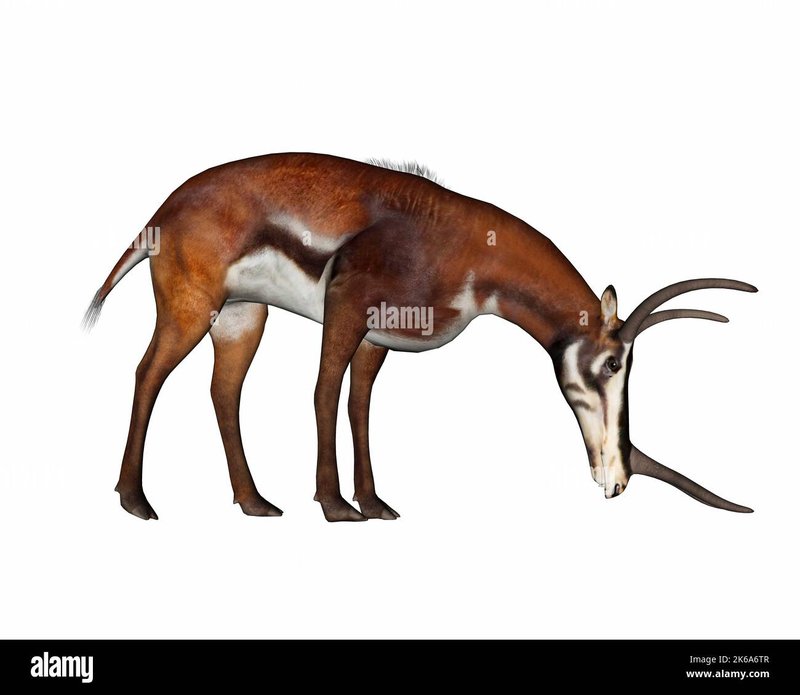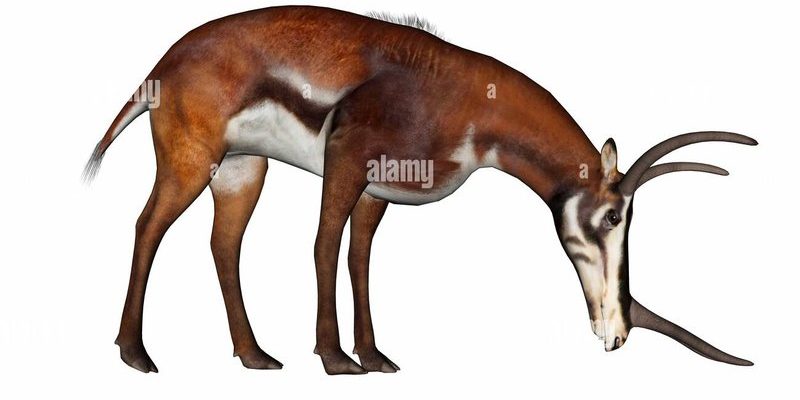
Antelopes belong to the Bovidae family, which also includes animals like cows and goats. Within this family, antelopes are an incredibly diverse group with over 90 different species, each with its own unique traits and behaviors. Understanding their evolutionary journey gives us insight into not just the antelopes themselves but also their ecosystems and the roles they play within them. Let’s dive deeper into the history of antelopes and explore how they became one of nature’s most captivating animals.
The Origins of Antelopes
Antelopes first appeared on the evolutionary scene around 20 million years ago. They are believed to have descended from a common ancestor with other members of the Bovidae family. This was a time in Earth’s history filled with changing climates and shifting landscapes, which played a significant role in shaping their evolution. As forests gave way to grasslands, these early antelopes adapted to their new environments.
One of the earliest known antelope species is the *Hippotragus*, which lived in a variety of habitats. This adaptability likely provided early antelopes with a survival advantage. They developed traits like elongated legs for speed and agility, enabling them to escape predators. Picture these early antelopes as the pioneers of the grasslands, learning to thrive in open spaces that were once covered by dense forests.
As different species of antelopes evolved, they developed various adaptations that helped them survive and reproduce in their specific environments. Some became larger and more robust, while others remained smaller and quicker. This diversity allowed antelopes to occupy a range of ecological niches, from the open savannas of Africa to the mountainous regions of Central Asia.
Antelope Diversity and Adaptations
Antelopes are a textbook case of adaptation. Their evolution led to a variety of forms and behaviors suited to their habitats. For instance, consider the *Grant’s gazelle*, known for its incredible speed and agility. This species, native to Eastern Africa, has long legs and a lightweight body, making it an expert sprinter. In contrast, the *eld’s deer* has evolved to thrive in swampy areas, featuring splayed hooves that help it navigate marshy terrain.
Each antelope species has developed unique characteristics that aid in its survival. For example, some antelopes, like the *kudu*, have long, spiraled horns that can be used in battles for mates or to deter predators. Others, like the *impala*, have remarkable jumping abilities, allowing them to clear obstacles and evade dangers on the open plains. These adaptations are not just fascinating biologically; they also provide critical insights into how species can thrive under different environmental pressures.
In addition to physical adaptations, social behavior has also evolved among antelope species. Many antelopes live in herds, a strategy that enhances their protection against predators. By sticking together, they can better watch for danger and confuse roaming lions or hyenas. Each antelope plays a role in the herd, from sentinels who stand watch to younger members who learn survival skills from their elders.
Antelopes are not just important for their own survival; they also play a vital role in their ecosystems. As herbivores, they help maintain the balance of the vegetation in their habitats. By feeding on grasses and shrubs, antelopes promote plant regrowth and diversity, which in turn supports a wide array of other wildlife. Imagine the savanna as a bustling community where each species, including antelopes, contributes to the overall health of the environment.
Moreover, antelopes serve as a crucial food source for many predators. Big cats, wild dogs, and birds of prey depend on these agile animals for sustenance. The population dynamics between antelopes and their predators showcase a classic example of the predator-prey relationship, highlighting the interconnectedness of life in the savanna. When antelope populations thrive, it often means that predators are also doing well, and vice versa.
However, the balance can be delicate. Changes in habitat due to climate change or human activities can threaten antelope populations. Overhunting and habitat loss have led to declining numbers in some species. As stewards of the land, it’s vital to understand this dynamic and work towards conservation to ensure that antelopes can continue to flourish in their natural environments.
Evolutionary Milestones: An Overview
Throughout their evolutionary history, antelopes have marked several key milestones that highlight their adaptability and resilience.
- 20 Million Years Ago: The origin of the antelope lineage from common bovids.
- 10 Million Years Ago: Diversification into various species as habitats changed.
- 5 Million Years Ago: Development of distinct physical traits, such as size and speed.
- Present Day: Over 90 species with unique adaptations and behaviors, each thriving in different ecosystems.
These milestones indicate the incredible journey of antelopes as they adapted and evolved in response to their ever-changing environment. Each step in their history tells a story of survival, illustrating the resilience inherent in nature.
Conservation Efforts for Antelope Species
With many antelope species facing threats from habitat destruction and hunting, conservation efforts are more crucial than ever. Organizations around the world are working to protect these animals and their habitats. You might wonder how this works. Well, it often starts with creating wildlife reserves where antelopes can roam freely without the threat of hunters or habitat loss.
Furthermore, raising awareness about the importance of antelopes in the ecosystem is vital. Educational programs help local communities understand how preserving antelope populations benefits the environment and, ultimately, human well-being. For example, ecotourism initiatives can provide alternative income sources for communities that rely on hunting, creating a win-win situation for both people and wildlife.
In many regions, conservationists are also working to mitigate the impact of climate change, which poses a severe threat to antelope habitats. Efforts include restoring degraded landscapes and promoting sustainable land-use practices that allow for both human development and wildlife protection. You see, it’s not just about saving one species; it’s about maintaining the delicate balance of ecosystems that support all forms of life.
The Future of Antelopes
Looking ahead, the future of antelopes will largely depend on our collective actions. Environmental changes are happening faster than ever, and adapting to these changes might be a challenge for some species. However, there is hope. By prioritizing conservation efforts and fostering a respect for wildlife, we can help ensure that future generations will still get to see antelopes bounding across the savanna.
It’s worth noting that the resilience of antelopes is remarkable. Many species have survived drastic changes in their ecosystems, showcasing their ability to adapt over time. This gives us a glimmer of hope that, with the right protection and care, antelope species can continue to thrive despite the challenges they face.
So, next time you think about antelopes, remember that their story is one of survival and evolution—a tale that reflects not just their journey but also our responsibility as caretakers of the planet. Whether you’re an animal lover, a conservationist, or simply curious about nature, understanding the evolutionary history of antelopes helps paint a fuller picture of the intricate web of life that surrounds us.
In conclusion, the evolution of antelopes is not just a chapter in the natural history of our planet; it’s a reminder of the delicate balance that sustains life. By learning about these creatures, we can appreciate the wonders of nature and recognize our role in protecting it.

